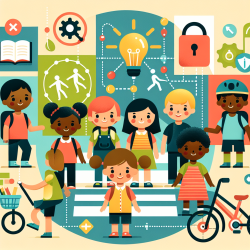The Unseen Power of Imitation in Child Development
Imitation is often seen as a simple act of copying, but recent research reveals its profound impact on children's learning and development. The study titled "An Old Mechanism, Imitation, Geared for Socio-Material Knowing in a 'Day in the Life' of First Graders" offers invaluable insights into how imitation acts as a bridge between children and their socio-material environment. This blog explores the findings of this study and how practitioners can leverage imitation to enhance educational outcomes for children.
Understanding the Role of Imitation
The research conducted by Pinto, Cameron, and Toselli (2020) employs the "Day in the Life" (DITL) methodology to observe two first graders throughout their daily interactions. The study highlights how imitation serves as a critical mechanism for children to learn the use of objects within their cultural context. This process involves not just the physical use of objects but also the transmission of their symbolic meanings.
Key Findings
- Imitation as a Learning Tool: The study found that children frequently engage in imitation to learn the normative and creative uses of objects. This behavior is observed both at home and in school settings, where children replicate actions demonstrated by adults and peers.
- Socio-Material Interactions: Imitation facilitates socio-material knowing, where children learn to navigate and manipulate their environment. This process is crucial for their cognitive and social development.
- Role of Peers and Adults: While adults often serve as initial models for imitation, peers play a significant role in reinforcing and expanding these behaviors through reciprocal interactions.
Implications for Practitioners
For practitioners in speech-language pathology and education, these findings underscore the importance of creating environments that encourage imitation. Here are some practical steps to implement these insights:
- Encourage Peer Interactions: Facilitate activities that promote peer modeling and reciprocal imitation. This can enhance social skills and collaborative learning.
- Model Desired Behaviors: Adults should consciously model behaviors and object use that they wish children to learn. This includes both normative uses and creative adaptations.
- Create Rich Learning Environments: Provide diverse materials and contexts that allow children to explore and imitate. This can lead to deeper understanding and mastery of socio-material interactions.
Encouraging Further Research
While the study provides a comprehensive look at the role of imitation, there is still much to explore. Practitioners are encouraged to conduct further research in diverse settings and with varied populations to expand our understanding of imitation's impact on child development.
To read the original research paper, please follow this link: An Old Mechanism, Imitation, Geared for Socio-Material Knowing in a “Day in the Life” of First Graders.










